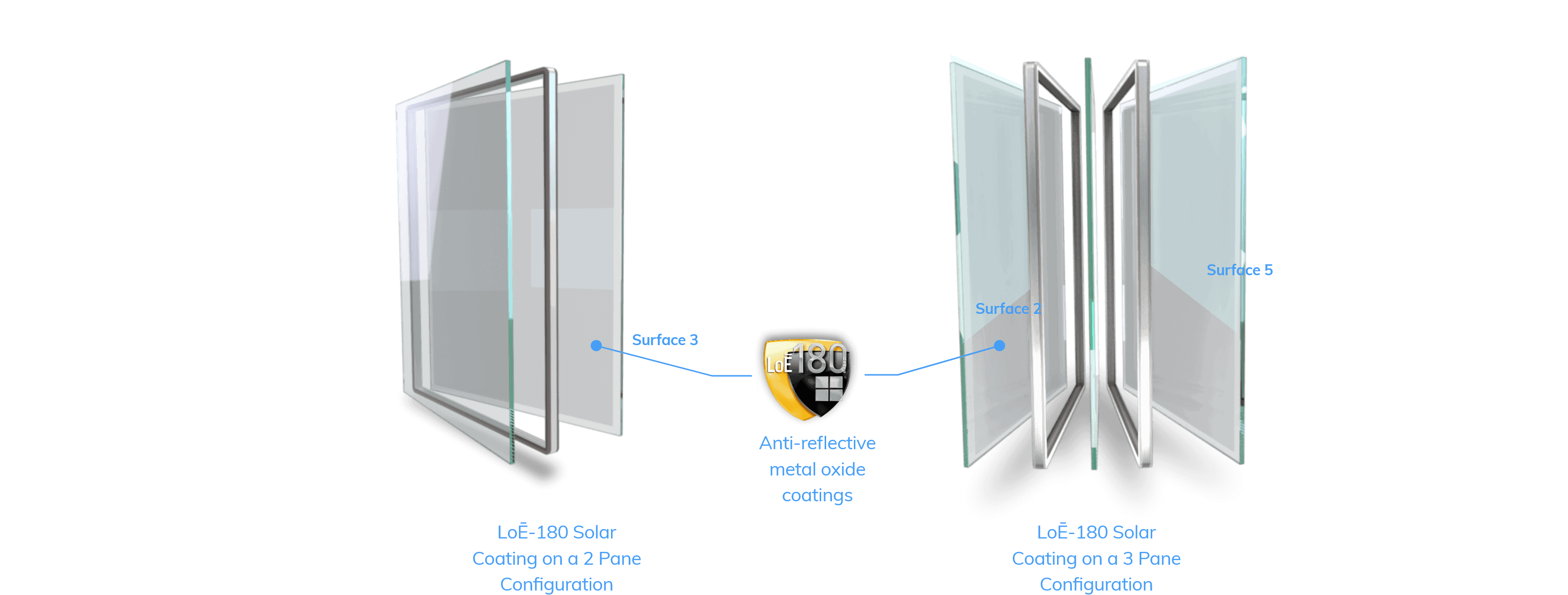When shopping for new windows, you may have heard about Low-E (low emissivity) glass. But what does it really mean, and how does it impact your home’s energy efficiency?
In this guide, we’ll break down what Low-E coatings are, the different types available, and the best layer combinations to help you choose the right option for your windows.
What Is a Low-E Coating?
Low-E coatings are microscopically thin, transparent layers of metal or metal oxide applied to glass to improve energy efficiency. These coatings reduce the amount of infrared and ultraviolet (UV) light that enters your home while still allowing visible light to pass through.
Benefits of Low-E coatings include:
- Improved Insulation: Keeps heat inside during winter and outside during summer.
- Reduced Energy Bills: Less strain on heating and cooling systems.
- UV Protection: Blocks harmful UV rays that cause fading in furniture and flooring.
Types of Low-E Coatings
There are two main types of Low-E coatings, each designed for different climate conditions and performance needs.
1. Hard-Coat Low-E (Pyrolytic Coating)
- Applied during the manufacturing process while the glass is still hot.
- Forms a strong bond with the glass, making it durable and resistant to scratching.
- Allows some heat to pass through, making it ideal for colder climates where passive solar heat gain is beneficial.
Common Names for Hard-Coat Low-E Glass:
- Pilkington Energy Advantage
- Guardian ClimaGuard
- PPG Sungate
2. Soft-Coat Low-E (Sputter Coating)
- Applied in a vacuum chamber at room temperature.
- More effective at reflecting heat than hard-coat Low-E.
- Best for warmer climates where blocking heat from entering is important.
Common Names for Soft-Coat Low-E Glass:
- LoĒ-272 & LoĒ-366 (Cardinal Glass)
- Guardian SNX 62/27
- PPG Solarban 70XL
Single, Double, and Triple-Layer Low-E Coatings
Low-E coatings can be applied in different layer combinations to enhance performance.
Single-Layer Low-E Coating
- One thin layer of Low-E material.
- Moderate energy efficiency.
- Common in basic double-pane windows.
Double-Layer Low-E Coating
- Two layers of Low-E material for improved insulation.
- More effective at reducing solar heat gain.
- Ideal for high-performance energy-efficient windows.
Triple-Layer Low-E Coating
- Three layers of Low-E material for maximum insulation and solar control.
- Often paired with argon or krypton gas fills between panes.
- Best for extreme climates where insulation is a top priority.
Which Low-E Coating Is Best for Your Home?
Choosing the right Low-E coating depends on your climate and home’s needs:
| Climate | Recommended Low-E Type |
|---|---|
| Cold Climates (More Heat Retention) | Hard-Coat Low-E (Single or Double Layer) |
| Hot Climates (More Heat Reflection) | Soft-Coat Low-E (Double or Triple Layer) |
| Mixed Climates (Balanced Performance) | Soft-Coat Low-E (Double Layer) |
Ready to Upgrade to Energy-Efficient Windows?
Choosing the right Low-E coating is an important step toward improving your home’s energy efficiency. If you’re ready to get started, we make it easy!
Learn More About Window Technology
Check out these related guides:

